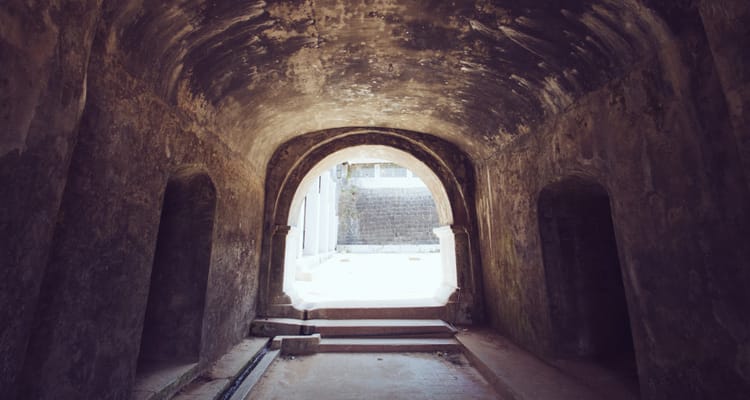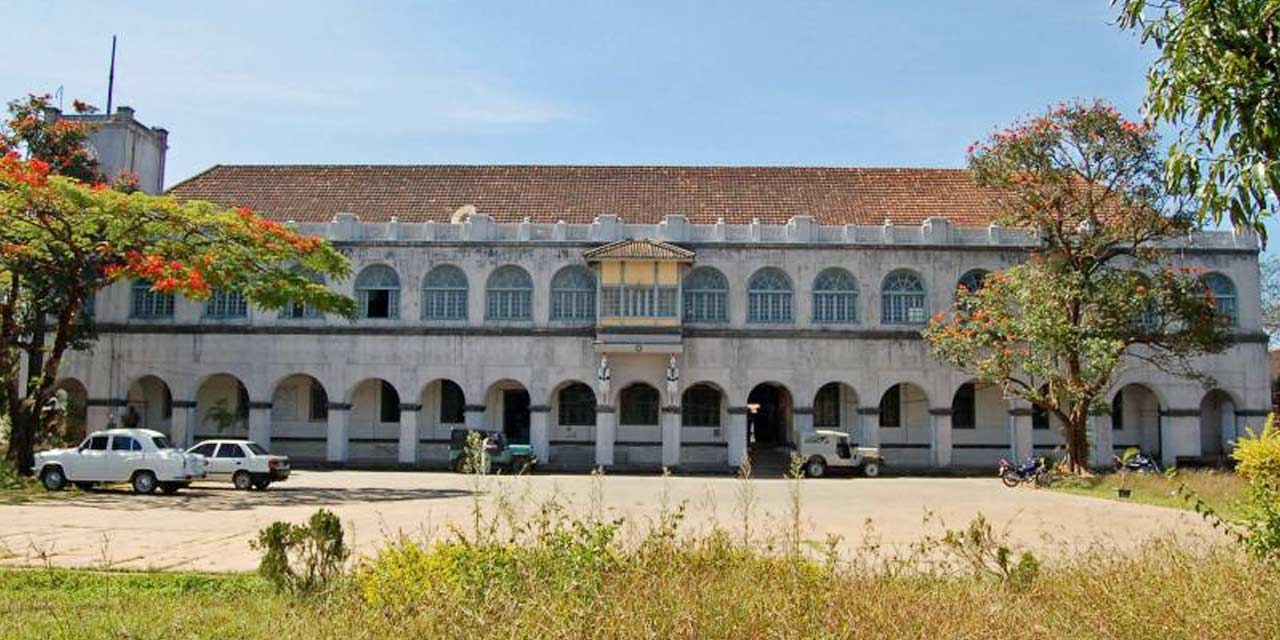Madikeri Fort, also known as Mercara Fort, a majestic citadel nestled amidst the picturesque Western Ghats, stands as a testament to the rich heritage and cultural tapestry of Coorg, a region renowned for its lush greenery, coffee plantations, and ancient traditions. The fort, located in the heart of Madikeri town, has witnessed centuries of history, serving as a strategic military outpost, a royal residence, and a symbol of the Coorgi people’s resilience and spirit.
How to Reach, Entry Timings – Madikeri Fort
The fort is centrally located in Coorg and easily accessible by car.
Entry Fee: NIL
Parking Fee: NIL
Photography Charges: NIL
Timings: Madikeri Fort is open on days except Monday, from 10 to 5.30 pm.
A Brief History of Madikeri Fort
Originally built in the late 17th century by Mudduraja, the ruler of the Kodagu Kingdom, it symbolized the power and influence of the local rulers. The fort was initially constructed as a fortified outpost to protect the kingdom from external threats. Over time, it evolved into a grand palace complex, reflecting the luxury and power of the ruling family
The fort underwent significant modifications when Tippu Sultan took over in the 18th century, transforming it into a granite fortress and renaming it Jaffarabad. The European architectural influence, introduced by the granite construction, is fused with Indian elements, particularly seen in the life-size elephant statues at the entrance.

In 1790, Dodda Vira Rajendra reclaimed the fort. The most significant period in the history of Madikeri Fort was during the reign of Raja Appu Maiya, who ruled Coorg from 1804 to 1820. Under his leadership, the fort underwent extensive renovations and expansions, transforming it into a formidable stronghold. Raja Appu Maiya’s resistance against the British East India Company is legendary, and the fort played a crucial role in his defense. Further enhancements were made by Linga Rajendra II from 1812 to 1814. Among these additions was a square Mantapa, strategically built for the royal family to enjoy the scenic beauty of Coorg’s lush landscapes.
The fort saw yet another transformation when the British seized control in 1834. They contributed to the fort’s architectural diversity by building St. Marks Church in 1855, replacing the existing Veerabhadra temple. The church, built in Gothic style, features stained glass windows, adding a distinct character to the fort complex. In addition, a grand clock tower was added by the British in 1933, further solidifying the fort’s blend of diverse architectural and cultural influences. The fort was then converted into a military cantonment and handed over to the Mysore State in 1947. Today, Madikeri Fort stands as a heritage site, attracting visitors from all over the world

Architectural Marvels of Madikeri Fort
Madikeri Fort blends traditional Coorgi architecture and influences from other cultures, reflecting the region’s diverse history. The fort’s imposing structure is characterized by its thick stone walls, fortified gates, and watchtowers. The main entrance, known as the “Raja’s Gate,” is a grand structure with intricate carvings and sculptures.
Inside the fort complex, visitors can explore various historical buildings, including the Raja’s Palace, the Queen’s Palace, and the Durbar Hall. The Raja’s Palace is a magnificent structure with ornate ceilings, wooden carvings, and traditional Coorgi artwork. The Queen’s Palace, though smaller, is equally elegant and showcases the refined taste of the royal family.
The Durbar Hall is a spacious chamber where the king held court and received dignitaries. The hall is adorned with beautiful frescoes and paintings that depict scenes from Coorgi’s history and mythology. Visitors can also explore the fort’s underground tunnels, which were used for secret communication and as a refuge during sieges.

- Granite Walls: The fort’s most striking feature is its imposing granite walls, which were constructed during Tipu Sultan’s reign. These walls provided a formidable defense against invaders.
- Palace: The palace within the fort once served as the residence of the Kodava rulers. Although it has undergone renovations over the years, it retains some of its original architectural elements.
- Museum: The Madikeri Fort Museum showcases a collection of artifacts, including weapons, pottery, and historical documents. Visitors can learn about the region’s history and culture through these exhibits.
- Church: The church within the fort complex is a testament to the British influence in Coorg. It offers a peaceful atmosphere and provides a contrast to the fort’s military history.
- Elephant Statues: Two life-size statues of elephants guard the entrance to the fort, adding to its grandeur and symbolic significance.
Cultural Significance of Madikeri Fort
Madikeri Fort is not just a historical monument but also a cultural symbol of Coorg. The fort has been an integral part of the region’s social and religious life for centuries. Several festivals and ceremonies are held within the fort’s precincts, including the annual Madikeri Dasara and the Kodava Samaja Utsava.
The Madikeri Fort is unique by itself for housing the ornate Kote Maha Ganapati temple, an Anglican Church, a prison, and a museum. The fact that a Church stands within the walls of the fort signifies the dominance of the British people over the fort.
The fort is also home to several temples and shrines dedicated to various deities. The most prominent temple is the Omkareshwara Temple, which is located within the fort complex. The temple is dedicated to Lord Shiva and is a popular pilgrimage site for Hindus.

Madikeri Fort Today
Today, Madikeri Fort stands as a living testament to the rich heritage and cultural legacy of Coorg. The fort has been carefully preserved and restored to its former glory. Visitors can explore the fort’s various attractions, learn about its history, and experience the vibrant culture of Coorg.
The fort also serves as a venue for cultural events, exhibitions, and workshops. These initiatives help to promote awareness about Coorg’s history and heritage and attract tourists to the region. The Kote Maha Ganapati is the oldest part of the Madikeri Fort and the most visited too. Today, the Madikeri Fort premises serve as the Deputy Commissioner’s office.
Madikeri Fort is a must-visit destination for anyone interested in history, culture, and natural beauty. The fort’s majestic architecture, fascinating history, and serene surroundings offer a unique and unforgettable experience. As visitors explore the fort’s winding corridors and admire its ancient walls, they can’t help but be captivated by the stories it tells and the legacy it represents.
My Other Posts
If you are looking for options in Kashmir, check out my posts on Pahalgam, Gulmarg, Snowfall in Kashmir, and Best Time to Visit Kashmir. If you are looking for options in Ladakh, check out Ladakh Weather, Nubra Valley, 5 Days Kashmir Itinerary, Best Packing tips for Ladakh & best tourist places in Ladakh.
If you are looking for something in Sikkim, check Tsomgo Lake and Batasia Loop. If you are looking for some jungle safari read Gir Safari, or Bandipur Safari, feel blessed at Sri Venugopala Swamy Temple in Mysore.
If you are looking for places to visit in the Andaman Islands, please check my posts on Radhanagar Beach & Ross Island.
If you are looking for other options, check my posts on Murud Janjira, Kashid, Pirwadi Beach and Kihim Beach in Maharashtra or Malshej Ghat, Matheran Resorts, Kailash Temple Ellora, Vandri Lake, Kelwa Beach in Palghar & Mahabaleshwar.
Alternatively, if you are interested in some Religious tourism, please check my posts on Golden Temple, Kamakhya, Trimbakeshwar, Somnath Temple and Kashi Vishwanath. If you are looking for North East Adventure tours, check my posts on Shillong, Meghalaya, Dawki, Double Decker Living Root Trek, and 7-Day North East Itinerary.
For some adventure tours in the south check out Mandalpatti Trek.
If you are looking for some spirituality, you can check out Ganga Aarti in Dashashwamedh Ghat or Ghats in Varanasi.


4 thoughts on “Madikeri Fort, Coorg : A Sentinel of History”